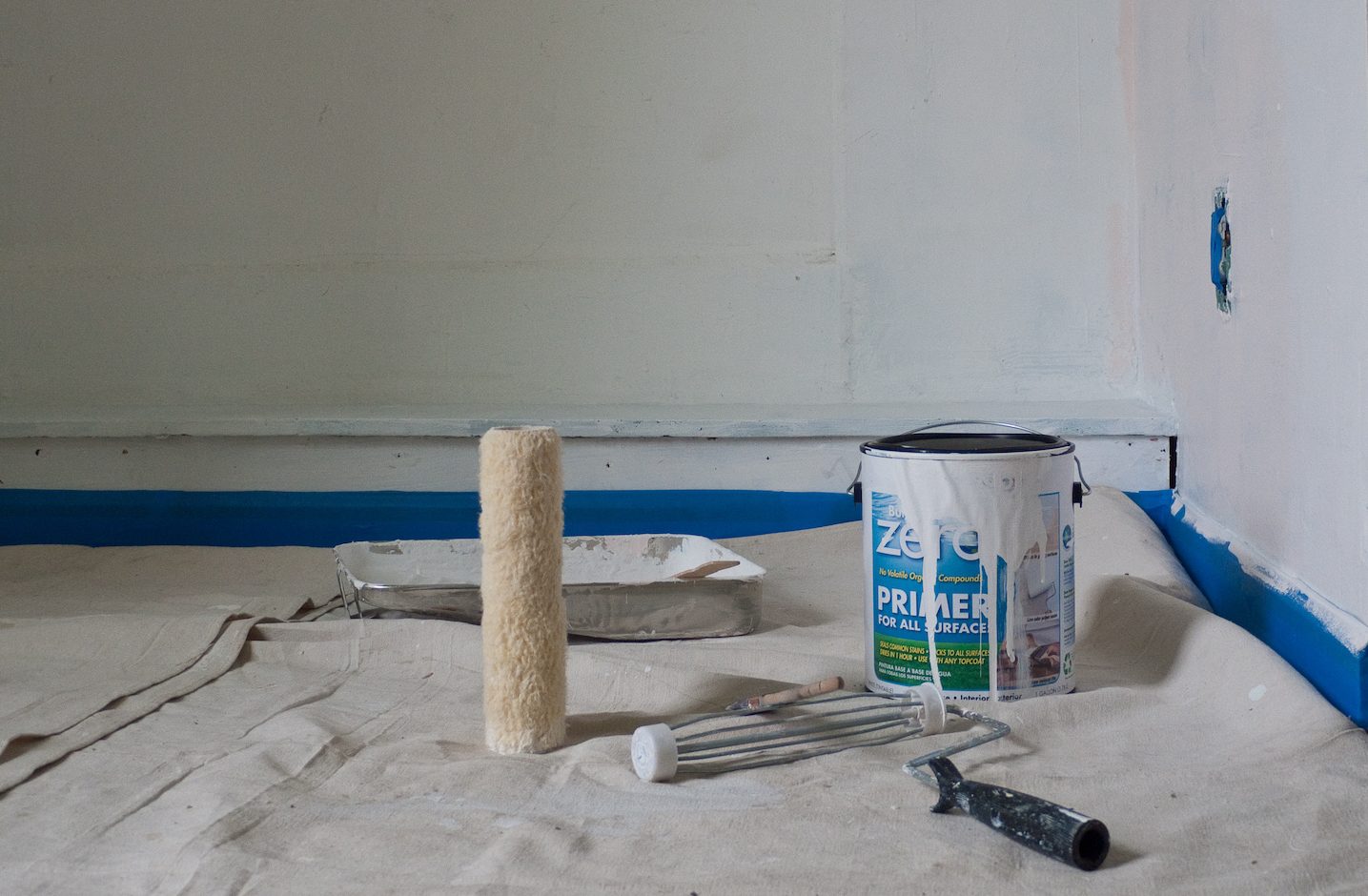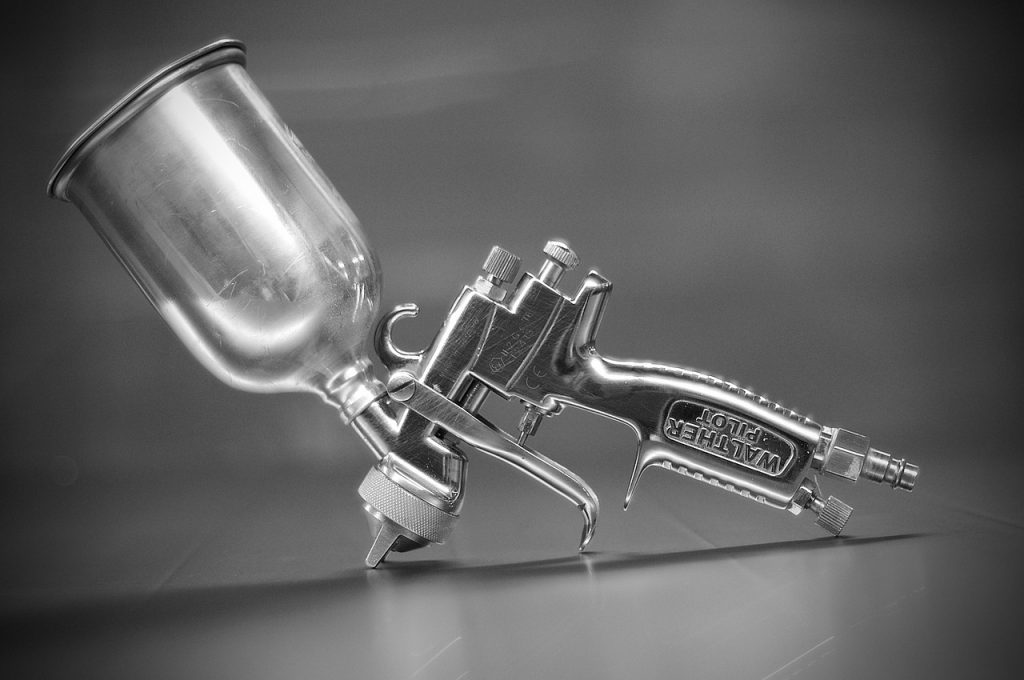
Summary
– Step 2: Case 2: Cleaning the roller after applying oil paint
– Step 3: Cleaning a spray gun
– Step 4: Cleaning an aerosol can
– Step 5: Cleaning Paint Tools and Accessories
– Step 6: What to do with used paint solvents?
This post is a continuation from How to Clean Your Painting Equipment (Part 1) which already covered the following:
Steps to take to clean painting equipment:
– Step 1: Cleaning brushes and paintbrushes
– Step 2: Case 1: Cleaning the rollers after applying waterbased paint
Thank you for having stayed posted on our blog. This post will now continue with the following steps.
2. Case 2: Cleaning the roller after applying oil paint
Some rollers are disposable after use, in this case, it is not necessary to clean them. In the case of reusable rollers, clean the sleeve to remove all traces of paint and allow it to dry.
Clean the roller used to apply oil paint with a solvent:
– Wring out the roller sleeve by squeezing it with a painter’s knife or spatula.
– Remove the sleeve from the roller frame.
– Fill a tray or basin with the appropriate solvent and dip the sleeve in the solvent. Allow the paint to drain until the solvent is saturated.
– Do not discard the solvent! Transfer it to a glass container (bottle, jar) with a tight-fitting lid.
– Fill the pan or tank again with solvent, place the sleeve, and let it drain. Repeat until it is clean.
– Empty the pan or tank by transferring the solvent into a glass container, rinse and fill with warm soapy water.
Rinse with warm water:
– Rinse the sleeve with warm soapy water and then with clear water.
– Wring out the sleeve and hang it up to dry.
3. Cleaning a paint gun

To clean a spray gun, use:
– either a suitable solvent, if you have applied an oil paint (glycero, polyurethane, epoxy),
– or water, if you have applied a water-based paint (acrylic, vinyl, alkyd).
Clean the tank, the gun circuit, the spray nozzle and the outside of the gun.
Clean the gun after applying oil paint.
– Ventilate the room if you are indoors.
– Fill the tank with the appropriate solvent (indicated on the paint can).
– Turn on the spray gun and spray the product on a cardboard box, the solvent will clean the tank and the gun circuit.
– Clean the nozzle with a brush dipped in the appropriate solvent.
– Soak a cloth with solvent and clean the paint traces on the outside of the spray gun.
Tip: If you are cleaning a power gun, replace the solvent with petroleum jelly oil to clean the tank and system.
Clean the gun after applying water-based paint.
– Fill the gun tank with water.
– Spray water on a cardboard box to clean the tank and the system.
– Remove and clean the nozzle with a brush dipped in water.
4. Cleaning an aerosol can
It is important to clean the spray nozzle of an aerosol paint can after each use to prevent it from clogging.
– Turn the spray can upside down.
– Spray some paint on a cardboard box.
– The nozzle is cleaned.
5. Cleaning Painting Tools and Accessories
Tools, containers and accessories (paint tray, stencil, sponge, etc.) used for painting must also be cleaned.
Rinse all painting tools and containers thoroughly with water (after using water-based paint) or in the correct solvent (after using solvent-based paint).
– If you have rinsed the tools in water, transfer the water to an empty container and let it settle. Spill the water and take the paint residue to the waste disposal site. Wash the rags used for cleaning.
– If you have rinsed the tools in a solvent, transfer the solvent to a glass container with an airtight lid. Take the cleaning cloths to the waste disposal site.
Important: Never put a cleaning cloth that has been used to clean a solvent paint, or in contact with this type of product, directly into a washing machine. Your cloths may catch fire.
6. What should I do with used paint solvents?
– Keep the containers into which you have transferred the solvent tightly closed. Let the product decant before putting it into another glass container, clean. Take the paint residue to the waste disposal site.
– Label your container to indicate the type of solvent it contains. This solvent can be used again if stored properly.
That’s it! Now you know how to clean your painting equipment. Stay posted for our next publication. Until then, remember to comment and share this post.











